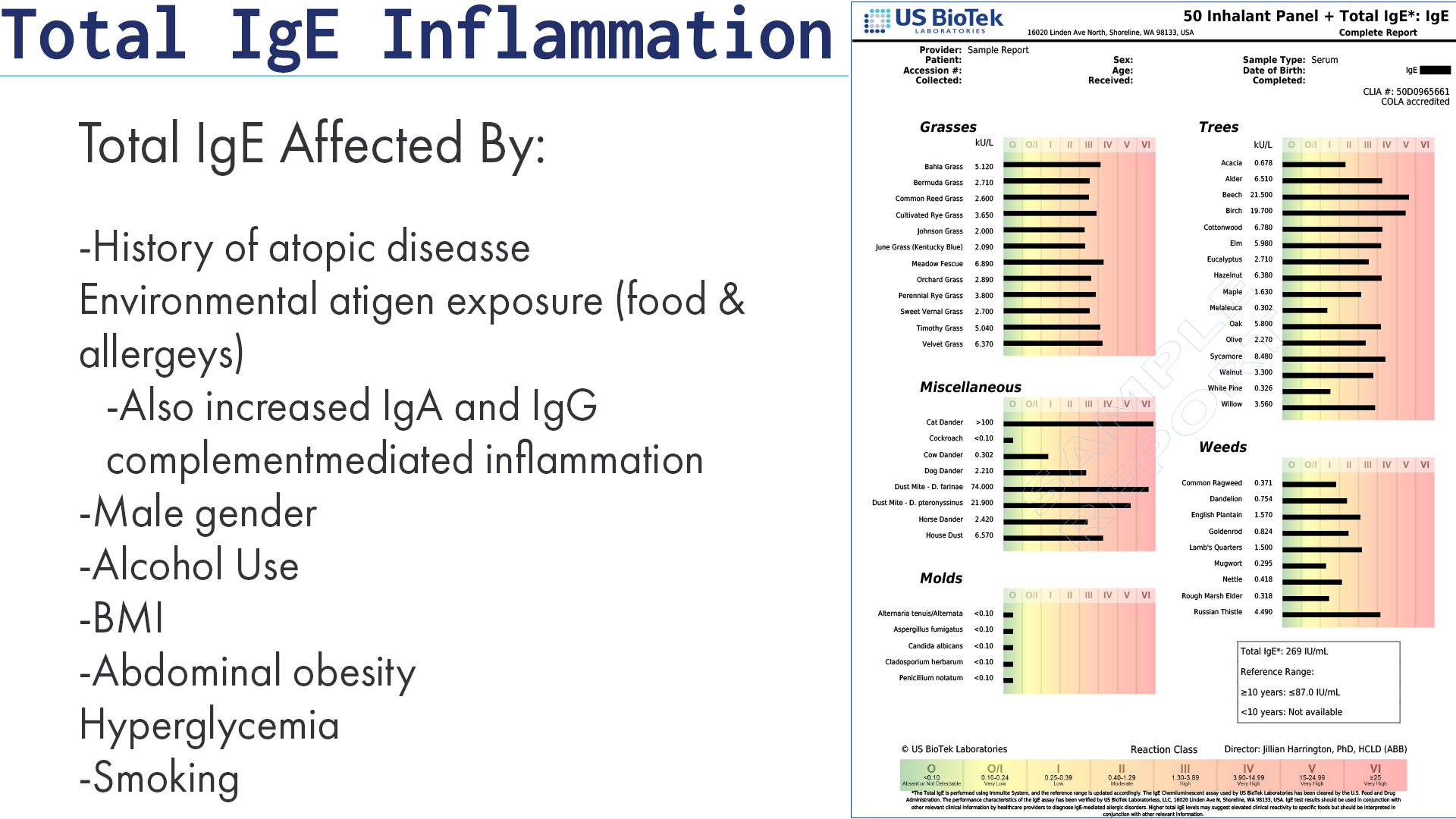4 Questions On NAD/NADH Testing Answered
Unlocking the Secrets of Cellular Energy
4 min read
![]() Dr. Andrea Gruszecki, ND
:
February 14, 2023 at 8:30 AM
Dr. Andrea Gruszecki, ND
:
February 14, 2023 at 8:30 AM

The shocking collapse of football safety Damar Hamlin during a recent Monday Night Football game has refocused attention on heart health in younger populations. Our society typically associates increased cardiovascular risk with mature adults. Since February is National Heart Month, now is a good time to review some unexpected cardiovascular risks that can affect young and old alike: type II diabetes, total IgE, and air pollution exposure.
Youth-onset type II diabetes (T2D) greatly increases the risk of early cardiovascular disease and increased adverse outcomes. The incidence of T2D is steadily increasing in adolescent populations. Both obesity and low levels of physical activity are considered pre-disposing risk factors. An ongoing large-scale epidemiology study by the Centers for Disease Control (CDC) indicates multiple additional risk factors including:
A dried-urine Organic Acids profile contains multiple biomarkers that, when dysregulated, can raise suspicions about insulin regulation. These disruptions in a patient’s primary biochemical pathways can occur months to years before a conventional hemoglobin A1c test is diagnostic.
Total IgE is a little-known risk factor for cardiovascular disease (CVD). Total IgE is the sum of antigen-specific IgE (foods, pollens, dust, pet dander, etc.) and IgE autoantibodies. The ratio between environmental and auto-IgE antibodies plays a role in determining the risk; if a patient has higher levels of environmental antigen-specific IgE (more allergies), then there is less impact on CVD risk because there are fewer auto-antibodies in the IgE total. Higher IgE levels induce histamine release, and altered local histamine levels can affect liver cholesterol metabolism and ketone production, both of which are related to heart health.

Exposure to fine particulates (< 2.5mm or PM2.5) in air pollution has been associated with cardiac arrhythmias in adolescents, and other chemical exposures have been significantly or suggestively associated with an increased risk of metabolic syndrome (“pre-diabetes”) in Korean adults and adolescent American subjects.
PM2.5 particulates induced premature ventricular contractions (PVCs) within 2 hours of exposure. While rare, frequent PVCs can increase an individual’s risk of sudden cardiac death. Other contributing factors for PVC occurrence include African-American heritage, tobacco, alcohol or caffeine use, anxiety, low mineral levels (low magnesium or potassium), and stimulant medications. It is easy to see how several contributing factors, including air pollution exposures, may combine to create a more significant risk.
Air pollution particulates are, in large part, the result of fossil fuel combustion such as diesel exhaust or black carbon. Particulates may also contain metals, liquids, and vapors that can further increase the potential toxicity of the particle. Smaller particles travel deeper into the lungs, causing inflammation and immune activation.
The Environmental Pollutants profile can be used to screen for exposure to air pollution, fossil fuels, or other products of combustion. Once identified and eliminated from the environment, detoxification may begin. Specific nutrients may be required for certain pollutants; information about nutritional support may be found in both the US BioTek Environmental Pollutants Reference Guide and the Organic Acids Interpretation Guide available online.

Evaluating all patients, young and old, for lesser-known cardiovascular and metabolic risk factors may improve health and decrease risk. Early screening and elimination of toxic exposures combined with personalized nutritional support and lifestyle guidance may reduce overall inflammation and can help each patient reduce their cardiovascular risks and increase their “heart happiness”.
Dabelea D. Diabetes in Youth-Looking Backwards to Inform the Future: Kelly West Award Lecture 2017. Diabetes Care. 2018 Feb;41(2):233-240.
Gaston SA, Tulve NS. Urinary phthalate metabolites and metabolic syndrome in U.S. adolescents: Cross-sectional results from the National Health and Nutrition Examination Survey (2003-2014) data. Int J Hyg Environ Health. 2019 Mar;222(2):195-204.
He F, Yanosky JD, Fernandez-Mendoza J, Chinchilli VM, Al-Shaar L, Vgontzas AN, Bixler EO, Liao D. Acute Impact of Fine Particulate Air Pollution on Cardiac Arrhythmias in a Population-Based Sample of Adolescents: The Penn State Child Cohort. J Am Heart Assoc. 2022 Sep 20;11(18):e026370.
Jensen ET, Dabelea D. Type 2 Diabetes in Youth: New Lessons from the SEARCH Study. Curr Diab Rep. 2018 May 8;18(6):36.
Johannson KA, Balmes JR, Collard HR. Air pollution exposure: a novel environmental risk factor for interstitial lung disease? Chest. 2015 Apr;147(4):1161-1167.
McKillop AM, Flatt PR. Emerging applications of metabolomic and genomic profiling in diabetic clinical medicine. Diabetes Care. 2011 Dec;34(12):2624-30.
Menni C, Fauman E, Erte I, Perry JR, Kastenmüller G, Spector TD, et al. Biomarkers for type 2 diabetes and impaired fasting glucose using a nontargeted metabolomics approach. Diabetes. 2013 Dec;62(12):4270-6.
Min KB, Min JY. Risk of Cardiovascular Mortality in Relation to Increased Total Serum IgE Levels in Older Adults: A Population-Based Cohort Study. Int J Environ Res Public Health. 2019 Nov 7;16(22):4350.
National Heart, Lung, and Blood Institute (2023) February is American Heart Month. https://www.nhlbi.nih.gov/education/american-heart-month . Accessed 30 Jan 2023.
Owora AH. Commentary: Diagnostic Validity and Clinical Utility of HbA1c Tests for Type 2 Diabetes Mellitus. Curr Diabetes Rev. 2018;14(2):196-199.
Public Broadcasting Service KCTS9 (2023) Examining football’s health risks after Damar Hamlin’s cardiac arrest on the field. https://www.pbs.org/newshour/show/examining-footballs-health-risks-after-damar-hamlins-cardiac-arrest-on-the-field . Accessed 30 Jan 2023.
Shim YH, Ock JW, Kim YJ, Kim Y, Kim SY, Kang D. Association between Heavy Metals, Bisphenol A, Volatile Organic Compounds and Phthalates and Metabolic Syndrome. Int J Environ Res Public Health. 2019 Feb 25;16(4):671.
TODAY Study Group; Shah RD, Braffett BH, Tryggestad JB, Hughan KS, Dhaliwal R, Nadeau KJ, Levitt Katz LE, Gidding SS. Cardiovascular risk factor progression in adolescents and young adults with youth-onset type 2 diabetes. J Diabetes Complications. 2022 Mar;36(3):108123.
Xu Z, Wang T, Guo X, Li Y, Hu Y, Ma C, Wang J. The Relationship of Serum Antigen-Specific and Total Immunoglobulin E with Adult Cardiovascular Diseases. Int J Med Sci. 2018 Jul 1;15(11):1098-1104.

Unlocking the Secrets of Cellular Energy

Short chain fatty acids (SCFAs) are organic acids produced by bacterial fermentation of dietary fibre and resistant starch. Enterocytes and...

Zonulin has emerged as a popular marker to assess the integrity of the intestinal mucosal barrier. Discovered by Dr Alessio Fasano, Zonulin...